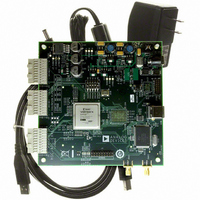HSC-ADC-EVALCZ Analog Devices Inc, HSC-ADC-EVALCZ Datasheet - Page 7

HSC-ADC-EVALCZ
Manufacturer Part Number
HSC-ADC-EVALCZ
Description
KIT EVAL ADC FIFO HI SPEED
Manufacturer
Analog Devices Inc
Datasheets
1.HSC-ADC-EVALB-DCZ.pdf
(28 pages)
2.HSC-ADC-EVALCZ.pdf
(32 pages)
3.HSC-ADC-EVALCZ.pdf
(40 pages)
Specifications of HSC-ADC-EVALCZ
Design Resources
EVALC PC Board Gerber File
Accessory Type
ADC Interface Board
Silicon Manufacturer
Analog Devices
Application Sub Type
ADC
Kit Application Type
Data Converter
Features
Buffer Memory Board For Capturing Digital Data, USB Port Interface, Windows 98, Windows 2000
Kit Contents
ADC Analyzer, Buffer Memory Board
Rohs Compliant
Yes
Lead Free Status / RoHS Status
Lead free / RoHS Compliant
For Use With/related Products
Single ADC Version
Lead Free Status / Rohs Status
Supplier Unconfirmed
Available stocks
Company
Part Number
Manufacturer
Quantity
Price
Company:
Part Number:
HSC-ADC-EVALCZ
Manufacturer:
Analog Devices Inc
Quantity:
135
When choosing a template that represents the detected ADC
board, with an interface with to HSC-ADC-EVALC data
capture board, a dialog box may appear that asks for permission
to configure the on-board FPGA. If the HSC-ADC-EVALC
FPGA did not configure on power-up for the particular ADC
you are evaluating, click Yes. Click No to bypass the FPGA
configuration.
If you check Do not show this message again, the software
automatically performs the last selected action in the future,
when choosing an applicable canvas template. If you want to
change this option, access these settings from the Options
menu in VisualAnalog.
VisualAnalog maintains a list of FPGA files that correspond
with a device ID that exists in the SPI register map of the ADC.
When the software detects a particular device ID that exists in
the table, it can choose a default FPGA configuration file. Note
that this process only occurs when using the HSC-ADC-EVALC.
Select the Existing tab to browse for an existing canvas file.
VisualAnalog maintains a list of the last five recently accessed
canvas files. To access this list and open one of these recent files,
select the Recent tab.
Click Open, VisualAnalog opens the selected canvas file or
canvas template.
Click Cancel and the main form appears with no open
canvases.
OPENING A BLANK CANVAS
To open a blank canvas, navigate to Other in the category tree,
and select the Blank Canvas template icon. Click Open.
Figure 11. FPGA Configuration Dialog
Rev. 0 | Page 7 of 40
USING THE MAIN FORM
The VisualAnalog main form maintains all currently open
canvases in an MDI environment. The left side of the screen
shows available Components (see Figure 14). This form docks
to the left by default, but can be moved and docked to any of
the corners of the VisualAnalog program. In addition, the
Components form can be floated and moved anywhere on
screen, even outside the VisualAnalog window.
Canvas Buttons
As you open or create canvases, buttons are created across
the tool bar, each button represent a canvas. These are canvas
buttons. You can use these canvas buttons to select or clear a
canvas for updating. When the button appears highlighted, the
canvas runs on the next update. You must select the canvas in
order to run it.
The text that appears on the canvas button is the Display Name
for the canvas. Change this property by selecting Canvas >
Properties.
It is possible to collapse the main form (see Figure 13). This is
useful when you want to conserve screen area and you do not
need to adjust canvas settings. To collapse the main form, click
the arrow on the right side of the main forms tool bar. To
expand the form, simply click this button again.
Figure 13. Collapsing and Expanding the Display
Figure 12. Opening a Blank Canvas
AN-905


















